Growing peanuts at home might sound like a whimsical dream reserved for sprawling farms, but I’m here to tell you it’s entirely achievable, even in a small garden or on a sunny balcony! Forget trekking to the store for that peanut butter fix; imagine harvesting your own fresh, homegrown peanuts.
The humble peanut, despite its name, isn’t actually a nut! It’s a legume with a fascinating history, cultivated for centuries in South America before spreading across the globe. In many cultures, peanuts symbolize prosperity and good fortune. Now, you can bring a little of that good fortune (and deliciousness!) to your own backyard.
Why should you try growing peanuts at home? Well, for starters, it’s incredibly rewarding to nurture a plant from seed to harvest. Plus, homegrown peanuts taste significantly better than store-bought ones – the freshness is undeniable! But more importantly, in a world increasingly concerned with food security and sustainable living, knowing where your food comes from is empowering. This DIY guide will walk you through every step, from choosing the right variety to curing your freshly dug peanuts. So, grab your gardening gloves, and let’s get started on this nutty adventure!
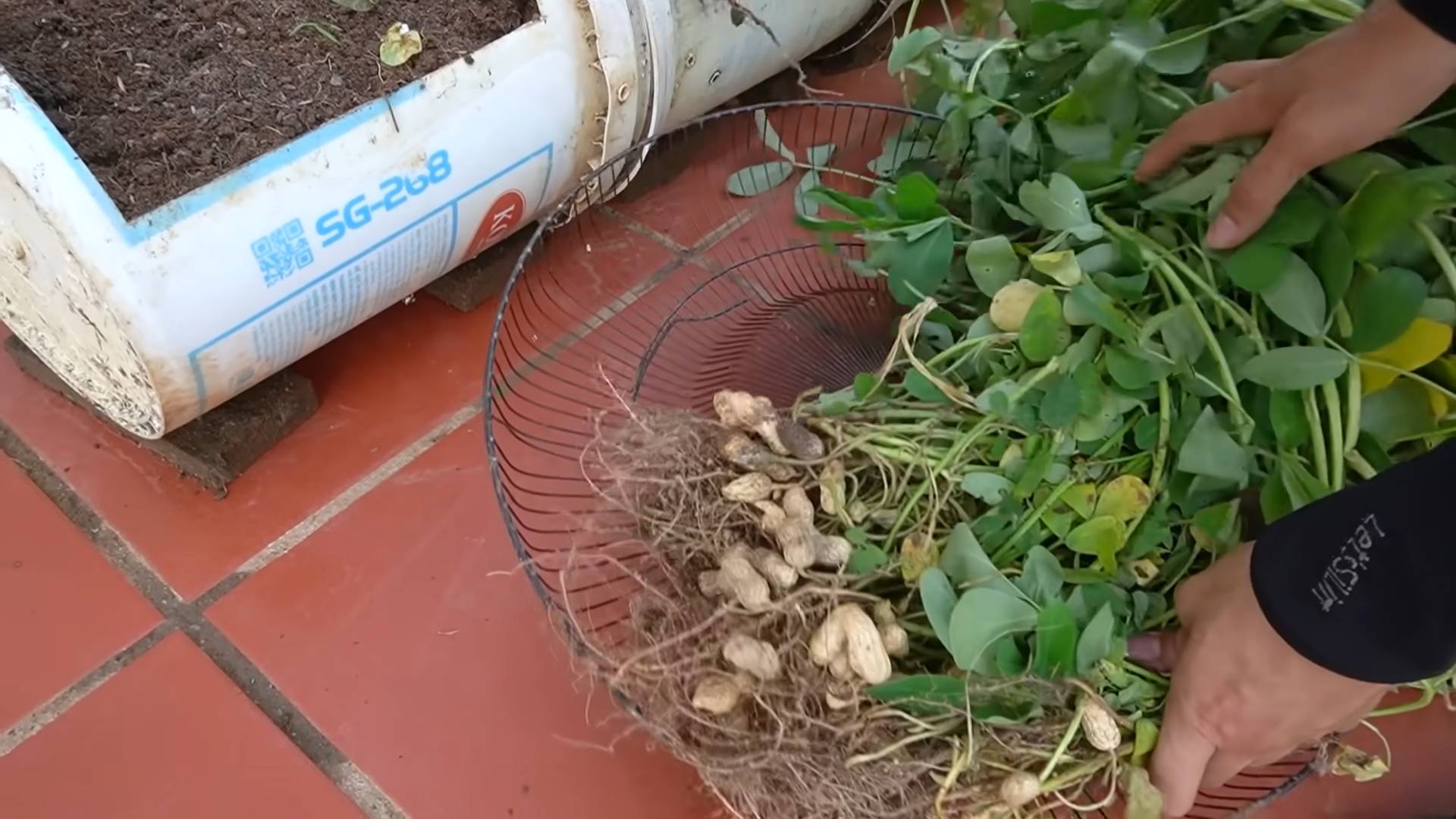
Growing Peanuts at Home: A Beginner’s Guide
Hey there, fellow gardening enthusiasts! Ever thought about growing your own peanuts? It’s surprisingly easy and incredibly rewarding. Imagine the satisfaction of harvesting your own homegrown peanuts, roasting them up, and enjoying a delicious, nutty snack. I’m here to guide you through the entire process, from planting to harvesting, ensuring you have a successful peanut-growing adventure.
Choosing the Right Peanut Variety
Before we dive into the nitty-gritty, let’s talk about peanut varieties. Different types thrive in different climates and have varying growth habits. Here’s a quick rundown:
* Virginia Peanuts: These are the large, gourmet peanuts you often find roasted in the shell. They need a long growing season (120-130 days) and are best suited for warmer climates.
* Spanish Peanuts: These are smaller, reddish-skinned peanuts with a higher oil content. They mature faster (around 100 days) and are more tolerant of cooler temperatures.
* Runner Peanuts: These are the most commonly grown peanuts in the US, often used for peanut butter. They have a good yield and mature in about 120 days.
* Valencia Peanuts: These are sweet peanuts with three or four kernels per shell. They mature quickly (90-110 days) and are a good choice for shorter growing seasons.
I recommend choosing a variety that’s well-suited to your local climate and growing season. Check with your local garden center or agricultural extension office for recommendations. For me, Spanish peanuts have always been a reliable choice because of their shorter growing season.
Preparing the Soil
Peanuts are legumes, which means they can fix nitrogen from the air into the soil. However, they still need well-drained, loose soil to thrive. Here’s how to prepare your peanut patch:
* Sunlight: Peanuts need at least 6-8 hours of direct sunlight per day. Choose a sunny spot in your garden.
* Soil Type: Sandy loam soil is ideal, but peanuts can tolerate other soil types as long as they are well-drained. Avoid heavy clay soil, as it can hinder pod development.
* Soil pH: Peanuts prefer a slightly acidic soil pH of 6.0 to 6.5. You can test your soil pH with a home testing kit or send a sample to your local agricultural extension office.
* Amendments: Amend the soil with compost or well-rotted manure to improve drainage and fertility. Avoid adding too much nitrogen fertilizer, as this can promote leafy growth at the expense of pod production. I usually add a generous amount of compost a few weeks before planting.
* Tilling: Till the soil to a depth of at least 8-10 inches to loosen it up and remove any rocks or debris. This will make it easier for the peanut pegs (the stems that develop into pods) to penetrate the soil.
Planting the Peanuts
Now for the fun part – planting! Here’s how to get your peanut plants off to a good start:
1. Timing: Plant peanuts after the last frost when the soil temperature has warmed to at least 65°F (18°C). In my area, that’s usually around late May or early June.
2. Seed Preparation: You can plant raw, unsalted peanuts directly from the grocery store, but I’ve found that shelling them first and soaking them in water for a few hours before planting can improve germination rates. Make sure the peanuts are raw and unroasted.
3. Planting Depth: Plant the peanuts about 1-2 inches deep and 6-8 inches apart in rows that are 2-3 feet apart.
4. Watering: Water the soil thoroughly after planting. Keep the soil consistently moist, but not waterlogged, until the seedlings emerge.
5. Marking: I always mark the rows with stakes or labels so I know where I planted them. It’s easy to forget, especially if you have a large garden!
Caring for Your Peanut Plants
Once your peanut plants have emerged, it’s important to provide them with the care they need to thrive.
1. Watering: Water regularly, especially during dry spells. Peanuts need about 1 inch of water per week. Avoid overhead watering, as this can promote fungal diseases. Drip irrigation is ideal.
2. Weeding: Keep the area around your peanut plants free of weeds. Weeds can compete with the peanuts for nutrients and water. Hand-pulling weeds is the best option, as herbicides can damage peanut plants.
3. Hilling: About a month after the plants flower, hill the soil around the base of the plants. This will encourage the pegs to penetrate the soil and form pods. I usually use a hoe to gently mound the soil around the plants.
4. Fertilizing: Peanuts don’t need a lot of fertilizer, but you can side-dress them with a small amount of phosphorus and potassium fertilizer about a month after planting. Avoid nitrogen fertilizers.
5. Pest and Disease Control: Peanuts are relatively pest-resistant, but they can be susceptible to certain pests and diseases, such as aphids, spider mites, and leaf spot. Inspect your plants regularly and take action if you notice any problems. Insecticidal soap or neem oil can be used to control aphids and spider mites. Fungicides can be used to control leaf spot. I prefer to use organic pest control methods whenever possible.
Harvesting Your Peanuts
The moment you’ve been waiting for! Harvesting peanuts is a bit of an art, but here’s how I do it:
1. Timing: Peanuts are typically ready to harvest in the fall, about 120-150 days after planting, depending on the variety. The leaves will start to turn yellow and the plants will begin to die back. You can also dig up a few plants and check the pods. The pods should be mature and the kernels should be plump and well-formed.
2. Digging: Use a garden fork or shovel to carefully dig up the plants. Be gentle, as you don’t want to damage the pods.
3. Shaking: Shake off as much soil as possible from the plants.
4. Drying: Hang the plants upside down in a well-ventilated area for 2-4 weeks to dry. This will cure the peanuts and improve their flavor. I usually hang them in my garage.
5. Picking: Once the plants are dry, pick the peanuts from the vines.
6. Curing (Optional): For even better flavor and storage, you can cure the peanuts in a warm, dry place for another week or two.
7. Storage: Store the dried peanuts in a cool, dry place in an airtight container. They can be stored for several months.
Roasting Your Homegrown Peanuts
Now for the best part – roasting and enjoying your homegrown peanuts!
1. Preheat Oven: Preheat your oven to 350°F (175°C).
2. Prepare Peanuts: Spread the peanuts in a single layer on a baking sheet.
3. Roast: Roast for 20-25 minutes, or until the peanuts are golden brown and fragrant. Stir occasionally to ensure even roasting.
4. Cool: Let the peanuts cool completely before eating.
5. Enjoy: Enjoy your delicious, homegrown roasted peanuts! You can add salt or other seasonings to taste.
Troubleshooting
Even with the best planning, things can sometimes go wrong. Here are a few common problems and how to address them:
* Poor Germination: If your peanuts aren’t germinating, make sure the soil is warm enough and that you’re not planting them too deep. Soaking the peanuts before planting can also help.
* Yellowing Leaves: Yellowing leaves can be a sign of nutrient deficiency or disease. Check the soil pH and consider adding a balanced fertilizer.
* Small Pods: Small pods can be caused by poor soil fertility or insufficient watering. Amend the soil with compost and water regularly.
* Pest Infestations: Monitor your plants regularly for pests and take action if you notice any problems.
Extra Tips for Peanut Growing Success
* Rotate Crops: Don’t plant peanuts in the same spot year after year. Rotate crops to prevent soilborne diseases.
* Use Inoculant: If you’ve never grown peanuts before, you can use a peanut inoculant to help the plants fix nitrogen from the air.
* Save Seeds: Save some of your best peanuts to plant next year.
Growing peanuts at home is a rewarding experience that anyone can enjoy. With a little planning and care, you can harvest your own delicious, homegrown peanuts. So, get out there and give it a try! I promise, you won’t regret it. Happy gardening!
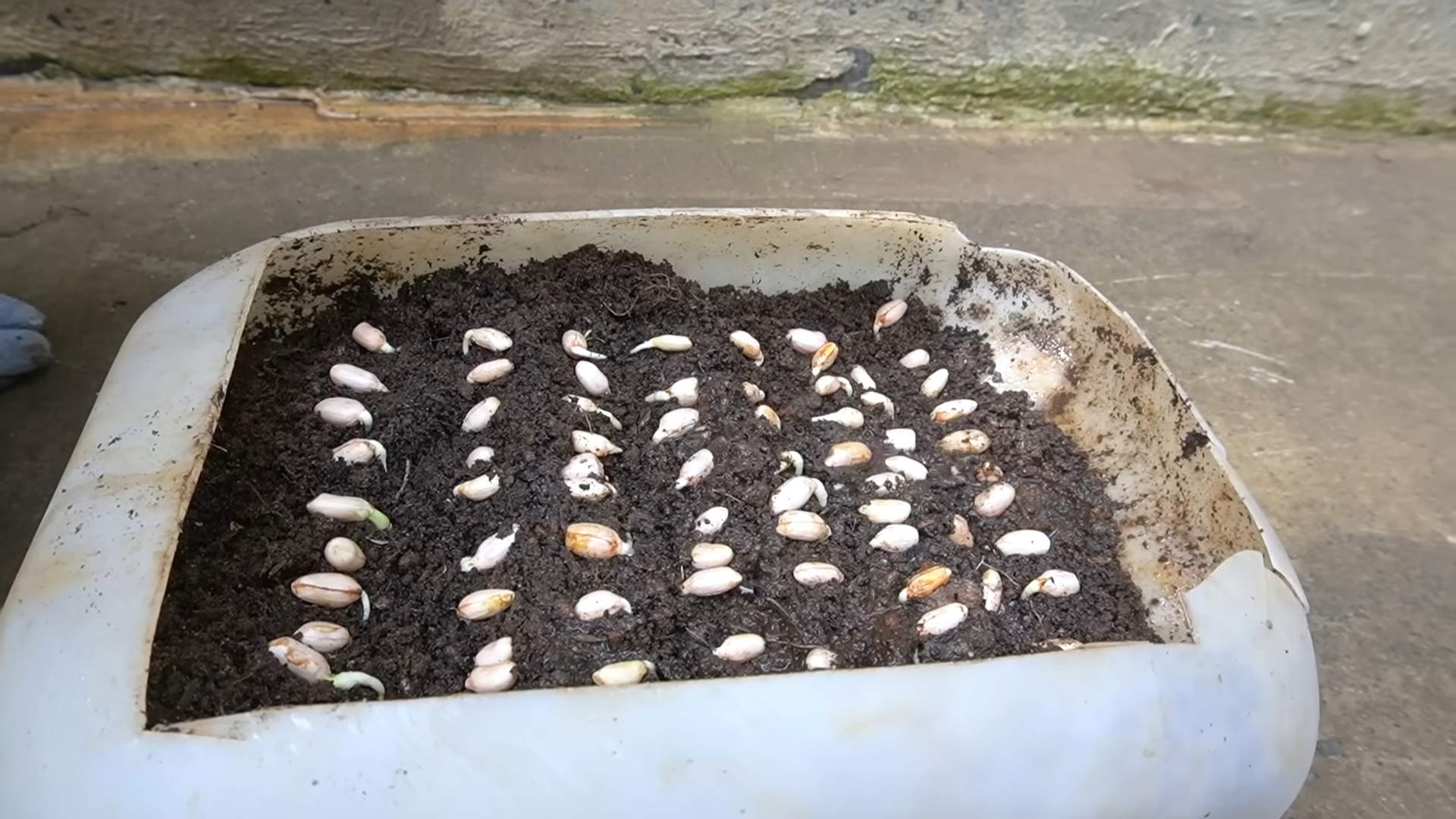
Conclusion
So, there you have it! Growing peanuts at home isn’t just a quirky gardening experiment; it’s a rewarding journey that connects you to the source of a beloved snack. From the initial planting to the satisfying harvest, every step is a testament to the magic of nature and the power of DIY. Forget the store-bought peanuts, often laden with preservatives and lacking that fresh, earthy flavor. Imagine the taste of freshly dug, homegrown peanuts, roasted to perfection and enjoyed with family and friends. It’s an experience that transcends mere consumption; it’s about creating something special from the ground up.
This method of growing peanuts at home is a must-try for several compelling reasons. First, it’s incredibly cost-effective. A single packet of peanut seeds can yield a surprisingly abundant harvest, saving you money in the long run. Second, it’s a fantastic educational opportunity, especially for children. Witnessing the entire life cycle of a plant, from seed to nut, fosters a deeper appreciation for the natural world. Third, and perhaps most importantly, it’s incredibly satisfying. There’s nothing quite like the feeling of digging into the soil and unearthing your own homegrown treasure.
But don’t stop there! Feel free to experiment with different varieties of peanuts. Virginia peanuts are known for their large size, while Spanish peanuts offer a sweeter flavor. Runner peanuts are ideal for peanut butter, and Valencia peanuts are perfect for boiling. You can also try different roasting methods. Some prefer to roast their peanuts in the oven, while others swear by the stovetop method. And for a truly unique twist, consider adding spices like chili powder, smoked paprika, or garlic salt to your peanuts before roasting.
We encourage you to embrace the challenge and embark on your own peanut-growing adventure. Don’t be intimidated by the process; it’s simpler than you might think. With a little patience, some basic gardening knowledge, and a whole lot of enthusiasm, you’ll be enjoying homegrown peanuts in no time.
And once you’ve experienced the joy of growing peanuts at home, we want to hear all about it! Share your tips, tricks, and triumphs with us in the comments below. Let us know what varieties you tried, what challenges you faced, and what delicious creations you made with your homegrown peanuts. Together, we can create a community of peanut-growing enthusiasts and inspire others to discover the magic of DIY gardening. So, get your hands dirty, plant those seeds, and prepare to be amazed by the bounty of your own backyard!
Frequently Asked Questions (FAQ)
What is the best time of year to plant peanuts?
The ideal time to plant peanuts is in the spring, after the last frost has passed and the soil has warmed to at least 65 degrees Fahrenheit (around 18 degrees Celsius). Peanuts require a long growing season, typically around 120-150 days, so planting early in the spring will give them ample time to mature before the first frost of fall. In warmer climates with longer growing seasons, you may be able to plant peanuts later in the spring or even early summer. However, it’s crucial to ensure that they have enough time to mature before the weather turns cold. Check your local weather forecasts and planting guides to determine the best planting time for your specific region.
What type of soil is best for growing peanuts?
Peanuts thrive in well-drained, sandy loam soil. This type of soil allows for good aeration and drainage, which is essential for healthy root development and prevents the peanuts from rotting. Avoid heavy clay soils, as they can become waterlogged and compact, hindering the growth of the peanut plants. If you have clay soil, you can amend it with organic matter such as compost, peat moss, or well-rotted manure to improve drainage and aeration. The ideal soil pH for peanuts is between 6.0 and 6.5. You can test your soil pH using a soil testing kit and adjust it accordingly with lime or sulfur.
How much sunlight do peanuts need?
Peanuts require at least 6-8 hours of direct sunlight per day to thrive. Choose a planting location that receives plenty of sunlight throughout the day. Insufficient sunlight can lead to stunted growth, reduced yields, and increased susceptibility to diseases. If you live in a particularly hot climate, some afternoon shade may be beneficial to prevent the plants from overheating. However, ensure that they still receive ample sunlight during the morning and early afternoon hours.
How often should I water my peanut plants?
Peanuts need consistent moisture, especially during the flowering and pegging stages. Water deeply and regularly, aiming to keep the soil consistently moist but not waterlogged. Avoid overhead watering, as this can promote fungal diseases. Instead, water at the base of the plants using a soaker hose or drip irrigation system. The frequency of watering will depend on the weather conditions and the type of soil. In hot, dry weather, you may need to water daily, while in cooler, wetter weather, you can water less frequently. Check the soil moisture regularly and adjust your watering schedule accordingly.
What are “pegs” and why are they important?
“Pegs” are the structures that develop after the peanut flowers are pollinated. These pegs are actually the developing ovaries of the peanut flower, and they grow downwards into the soil. The peanuts themselves develop underground at the end of these pegs. It’s crucial to ensure that the soil around the base of the plants is loose and easy for the pegs to penetrate. Mulching with straw or other organic material can help to keep the soil moist and loose. Avoid disturbing the soil around the plants during the pegging stage, as this can damage the developing peanuts.
How do I know when my peanuts are ready to harvest?
Determining the right time to harvest peanuts is crucial for optimal flavor and yield. The best indicator is the maturity of the pods. Dig up a few plants and check the pods. The inside of the shells should be dark brown or black, and the kernels should be plump and well-formed. Another sign is that the leaves of the plant will start to turn yellow and brown. Typically, peanuts are ready to harvest about 120-150 days after planting. However, this can vary depending on the variety of peanut and the growing conditions.
How do I harvest and cure peanuts?
To harvest peanuts, carefully dig up the entire plant, being careful not to damage the pods. Shake off any excess soil and allow the plants to dry in the sun for a few days. This process is called “curing” and it helps to reduce the moisture content of the peanuts, which prevents them from rotting. After a few days of drying, you can remove the peanuts from the plants and store them in a cool, dry place. You can also roast the peanuts immediately after harvesting, but they will have a higher moisture content and may take longer to roast.
Can I grow peanuts in containers?
Yes, you can grow peanuts in containers, but you’ll need to choose a large container that is at least 18 inches deep and wide. Fill the container with well-drained potting mix and plant the peanut seeds according to the instructions. Container-grown peanuts may require more frequent watering and fertilization than peanuts grown in the ground. Also, make sure the container is placed in a location that receives plenty of sunlight.
What are some common pests and diseases that affect peanuts?
Some common pests that affect peanuts include aphids, spider mites, and leafhoppers. These pests can be controlled with insecticidal soap or neem oil. Common diseases that affect peanuts include leaf spot, rust, and white mold. These diseases can be prevented by practicing good sanitation, such as removing infected plant debris, and by using disease-resistant varieties of peanuts. Fungicides can also be used to control these diseases.
Can I make peanut butter from my homegrown peanuts?
Absolutely! Making peanut butter from your homegrown peanuts is a delicious and rewarding way to enjoy your harvest. Simply roast the peanuts until they are golden brown and then grind them in a food processor until they reach your desired consistency. You can add salt, sugar, or other flavorings to taste. Homemade peanut butter is often much fresher and more flavorful than store-bought peanut butter.

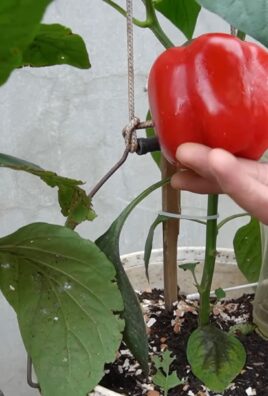
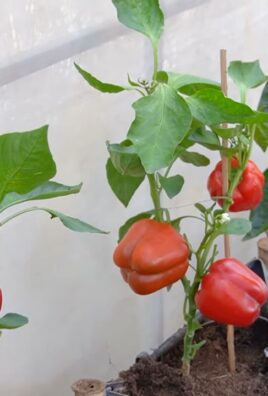
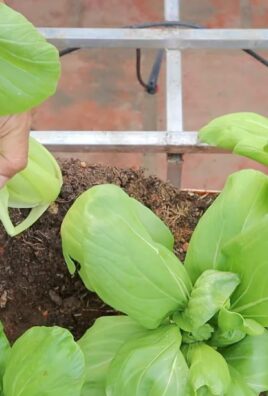
Leave a Comment